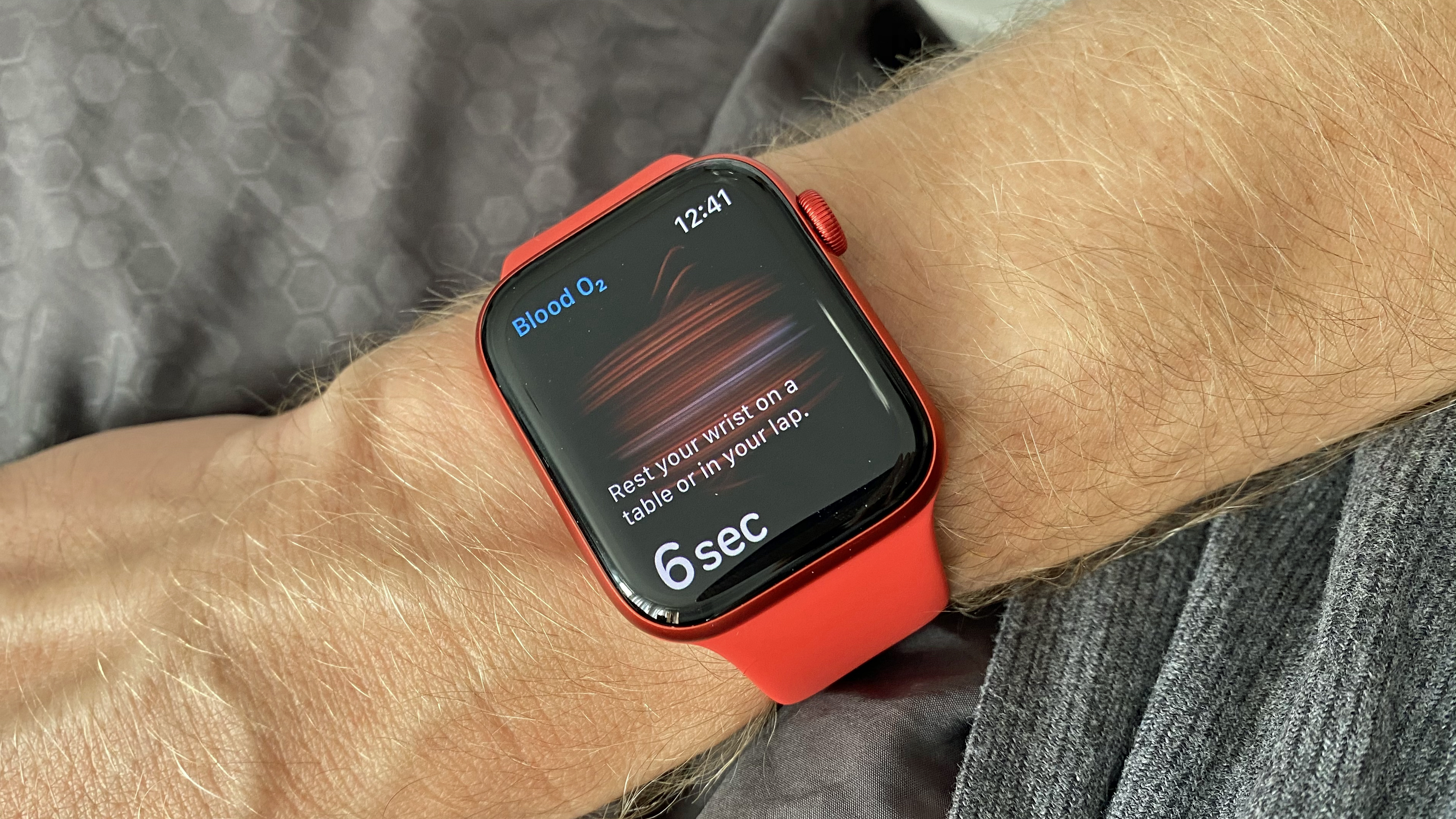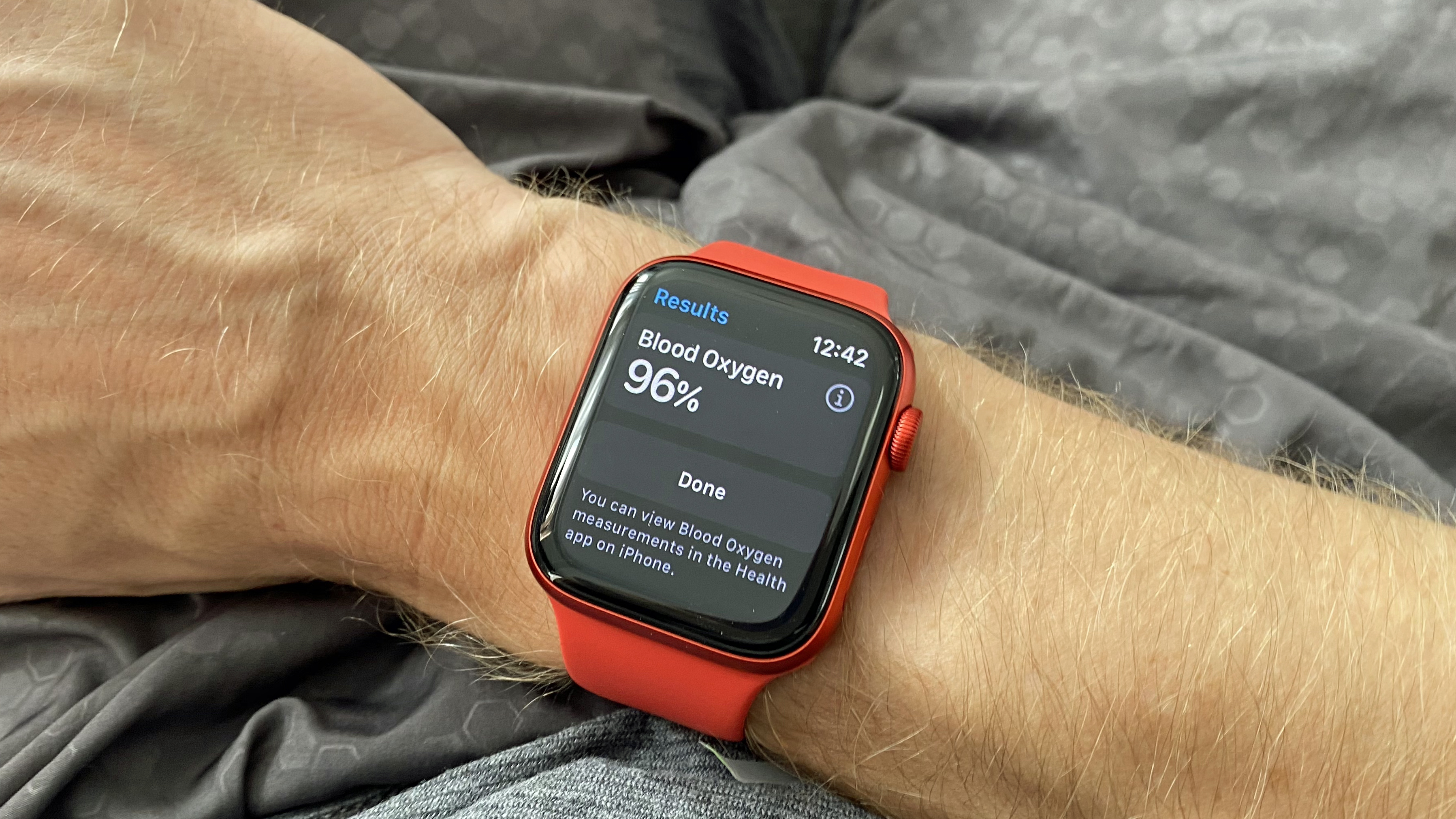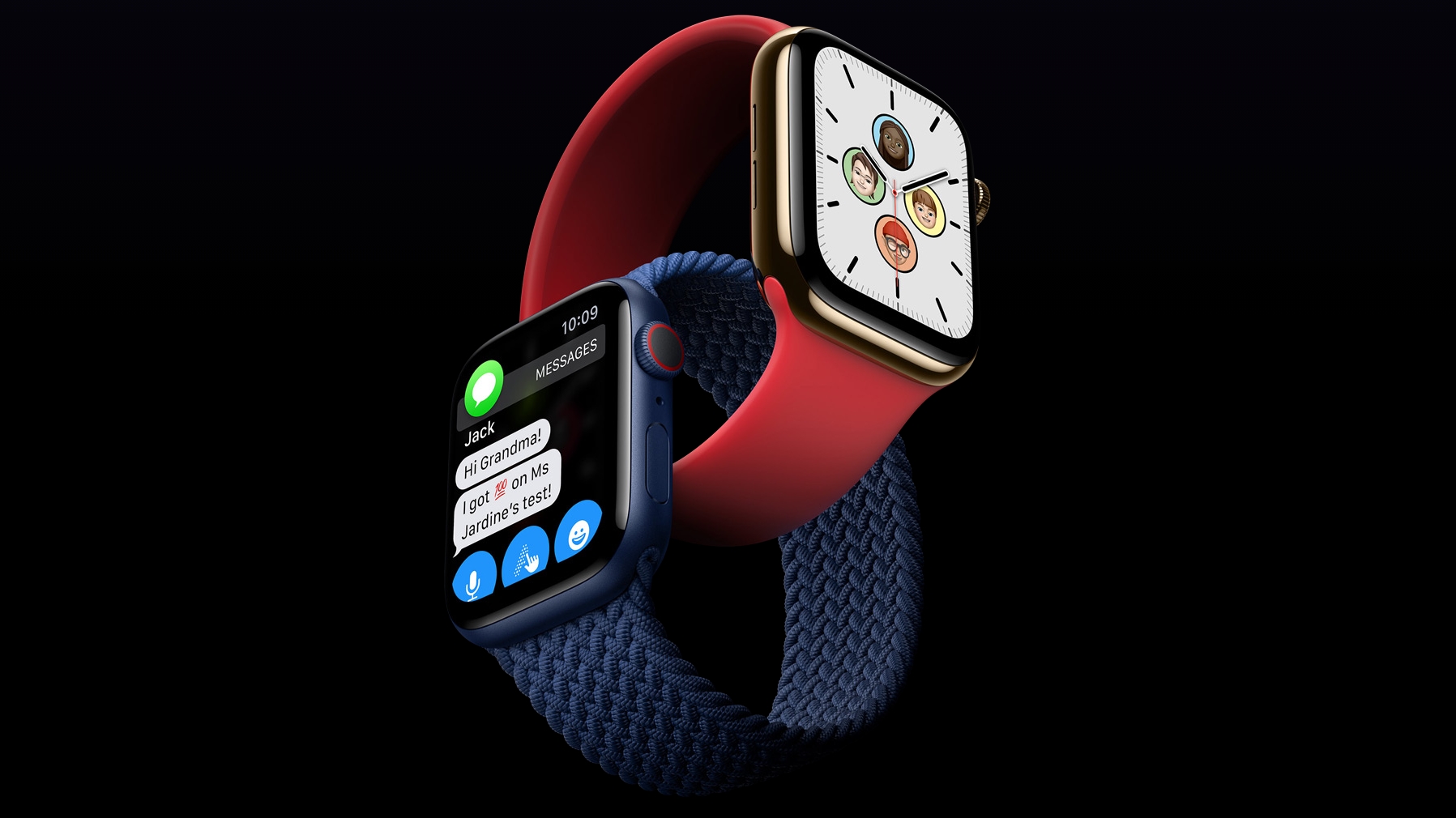Hands on: Apple Watch 6 review
This is a hands on review in progress, as we've only had a couple of hours with the new Apple Watch 6. We'll be updating it with new findings ahead of our incoming full review soon.
The Apple Watch 6 is something of a surprise upgrade – in the sense that, on the outside, it’s not that much of a change from the Apple Watch 5 (or even the Apple Watch 4).
The key upgrades, though, are within the watch itself, with the new S6 chipset inside allowing for a more powerful chipset, (theoretically) better battery life and a blood oxygen monitor to allow you to see how much of that vital O2 is pumping around your system.
There’s an altimeter to track your elevation (to the nearest foot, according to Apple) and the screen is now capable of firing up to two and a half times brighter when you’re out in strong sunlight, so you’ll never miss a notification on a hike.
It's also the poster-child for WatchOS 7, which brings in hand-washing tracking (although we couldn't get this to fire up once), sleep tracking and more watch faces, including the slightly-frightening capability to see your own Memoji face on your wrist, winking at you, should you so wish.
We’ve spent a couple of hours with the new Apple Watch 6 for this early hands-on review, to see whether the new upgrades offer any real and immediate benefits over the existing models.
Apple Watch 6 release date and price
The Apple Watch 6 release date has been set for Friday, September 18, although preorders are currently live if you know this is something you want.
In terms of a Watch 6 price, you’re looking at $399 / £379 / AU$599 for the 40mm version, while the 44mm version starts at $429 / £409 / AU$649 (those prices are for the GPS-only version, without cellular connectivity).
If you want an LTE-ready watch, the 40mm starts at $499 / £479 / AU$749, and the 44mm at $529 / £509 / AU$799.
Blood oxygen monitoring and spotting how high you go

The key upgrade for the new Apple Watch is the blood oxygen sensor, which can monitor how much oxygen is pumping around in your blood cells and can give an indication of any underlying medical issues (if, for example, your lungs aren’t working as well as they should be) or alert you to environmental factors (such as telling you, when you’re hiking up a mountain, in the thinner air is having an effect on your system).
It’s simple enough to use. You fire up the Blood Oxygen app, keep your wrist still for 15 seconds and wait as the app counts down, and then you’ll get a readout of the percentage of oxygen in your blood. The app also gives you some indication of what a ‘good’ reading looks like (between 95-100% is a-OK), but Apple stresses that this isn’t to be used in a medical setting, which diminishes the trust in it somewhat.
Apple's language on this is quite clear that it's not, in any way, meant to help you track a respiratory disease (which would include Covid-19) or to even consult with a doctor:
"Blood Oxygen app measurements are not intended for medical use, including self-diagnosis or consultation with a doctor, and are only designed for general fitness and wellness purposes. If you have questions about your health, contact a medical professional," says Apple on its site.
However, the blood oxygen readings work just fine, but for most it’s going to be entirely unused unless you’re heading to high altitude, or have a reason to worry about your respiratory rate – in which case you’ll probably have a medical-grade oxygen sensor around.
In order to stress-test it a little more, we went out for a quick 1km run up and down a local hill (which also, handily, tested the elevation capabilities of the Watch 6). We noted a 98% saturation level at the start, and 96% at the end – all nicely within range.

In short, it feels like that’s the last time we’ll use that feature, unless we happen to go trekking up a mountain. Perhaps using it overnight will give us some more interesting data, but given that Apple’s not going to give you information on medical conditions like sleep apnea, which causes sufferers to stop breathing at night, which can cause oxygen levels to drop, it’s hard to see the real benefit here.
The altimeter worked pretty well in our early tests though, noting that there was a 15m change in elevation as we ran and down the hill. We actually had an Apple Watch 6 and an Apple Watch SE strapped to our arms, and both concurred on the elevation, which gave us more confidence in the accuracy.
Apple Watch 6 design and display
The design of the Apple Watch is the same as it’s been since the Apple Watch 4, with the choices of 40mm or 44mm for different wrist sizes, and a larger screen than the one which debuted on the first Apple Watch and was last seen on the Watch 3.
The curved edges, the digital crown and the power button are all present and correct, and all have the same well-built feeling when you’re spinning or pushing them. The taptic engine inside – the little motor that creates the tapping feeling on your wrist when a notification comes in – is still one of the best ways to get your attention, and we suppose we’re finally getting used to hitting the fiddly clasp underneath the watch to change the straps over.
One thing we do want to praise: the addition of the (PRODUCT) Red color, which is a striking and vibrant addition to the range, with the red metallic casing feeling a bit more exciting on the wrist.
There are a number of new colors on offer with the Apple Watch 6: a new blue aluminum case, as well as a gold version of the stainless steel variant, and there's also a black graphite variant – but red is definitely our favorite.
The display is another change that Apple’s brought to the party with the new Watch 6 – while it’s the same OLED technology we’ve seen for years, Apple is continuing with the ‘always-on’ display of the Watch 5, so you can just glance down at your wrist and see the time.
Compare this to the new Apple Watch SE, where you still either need to tap or do a slightly convoluted raising of the wrist to see the time, and it’s a much neater solution. However, it did have an impact on the battery life in the Watch 5, so we’re hoping that Apple has improved things in this regard.
One thing we found curious concerned Apple’s vaunted ‘brightness boost’. In bright conditions, the Apple Watch 6 display is supposed to get a boost to two and a half times brighter than normal – and we could definitely see it just fine in bright sunshine.
However, we were also testing the Apple Watch SE at the same time, which we believe doesn’t have the same technology to boost up the brightness – yet the two displays looked identical in the brighter sunshine.
We’re checking in to see whether the Watch SE is actually imbued with the same technology, but otherwise we haven’t been able to see much of a difference in brightness in our (admittedly, very brief and thoroughly inconclusive) tests.
Early verdict

The Apple Watch 6 feels like a small upgrade over the Apple Watch 5, which felt like a small upgrade over the Apple Watch 4. While last year’s model brought the ‘always-on’ display, the Watch 6’s altimeter and blood oxygen sensor don’t seem to offer very much that’s new over the previous model.
The key miss for us is the blood oxygen sensor not giving you regular, on-the-go alerts – for someone who’s slightly worried about their respiration, which may be more people than usual during this Covid-19 pandemic, the Watch 6 can offer some relevant information, but otherwise it seems like a curio to have as a capability, rather than a genuine health benefit.
The Apple Watch 6 is still the premium model wearable you can buy from the Cupertino brand, and if the battery hasn’t been impacted, going for this model will give you the useful ‘always-on’ display, which is important as Apple no longer sells the Watch Series 5, its only other watch with that feature; however, beyond the attractive new color options, our early preview hasn’t found anything massively different to get excited about over last year’s Watch 5.
Comments
Post a Comment